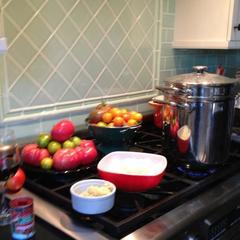-
Welcome to the eG Forums, a service of the eGullet Society for Culinary Arts & Letters. The Society is a 501(c)3 not-for-profit organization dedicated to the advancement of the culinary arts. These advertising-free forums are provided free of charge through donations from Society members. Anyone may read the forums, but to post you must create a free account.
Skimming Chicken Stock
-
Similar Content
-
- 91 replies
- 34,372 views
-
- 49 replies
- 16,032 views
-
- 13 replies
- 9,218 views
-
Is it advisable to make chicken stock by starting with a broth made with pressure cooked chicken feet?
By cteavin,
- 8 replies
- 2,014 views
-
- 7 replies
- 1,373 views
-
-
Recently Browsing 0 members
- No registered users viewing this page.




Recommended Posts